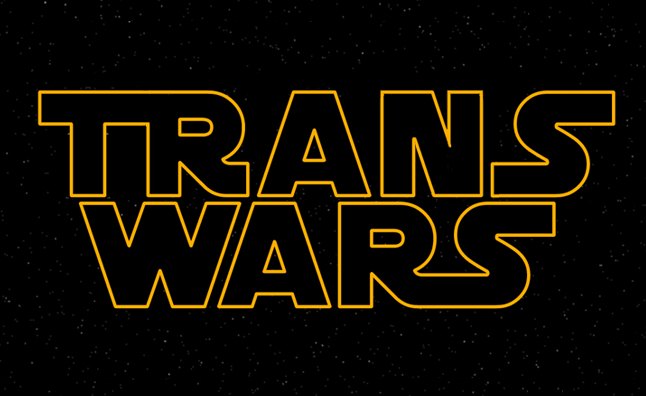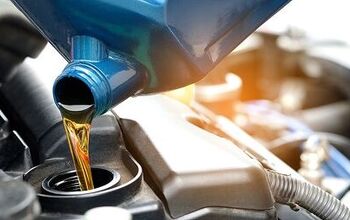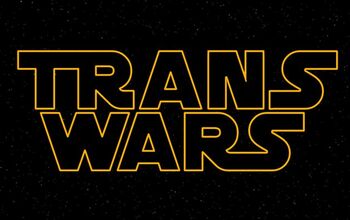TRANS WARS Episode I: The Phantom Pedal

Join us for a three-part miniseries exploring the ins and outs of automatic transmissions. For the first installment we celebrate heritage by tipping our hats to a great motoring tradition that’s as American as baseball, apple pie and Oldsmobile. This is Trans Wars!
Automakers are battling for the hearts and monthly payments of American drivers. Design, technology and performance are all critical new-vehicle attributes but fuel economy is arguably the top concern. Improved aerodynamics, enhanced engine efficiency and hybridization are all ways to cut consumption but there’s a battle going on right now and it involves transmissions.
Like a good spy novel, this cold war is full of controversy and intrigue; quarreling factions are vying for attention and market dominance. But instead of tanks and bombs, it involves gears and clutch packs as well as chains and torque converters.
SEE ALSO: TRANS WARS Episode III: Revenge of the Shift
The self-shifting transmission is totally dominant on this continent, capturing at least 90 percent of the market. But the automatic is not a unified front; three major technologies are vying for supremacy. Each one has its plusses and minuses, champions and detractors.
TORQUE-CONVERTER TRADITION
The automatic gearbox most people are familiar with features a fluid-filled torque converter and stepped gear ratios. These transmissions have been around for more than half a century, first arriving on the market in Oldsmobile cars for the 1940 model year. GM’s Hydra-Matic was a groundbreaking innovation, a technological advance that’s still affecting the industry today.
Of course the stepped-gear transmission has come a long way from the World War II era. Modern automatics feature more gears than there are days in a week as well as more computing power and software than an Apple store.
Some of the most advanced stepped-gear transmissions are manufactured by German firm ZF. The company has found great success with its cutting-edge gearboxes.
Bryan Johnson, senior manager of corporate communications for ZF North America said that with their eight-speed transmission “We started it with a Rolls-Royce Ghost and a Bentley Mulsanne,” but now the gearbox is found in vehicles from manufacturers like Jaguar, Audi, Jeep and even mainstream brands like Dodge.
“Traditionally in an automatic transmission you have a continuous power flow” Johnson said, noting that there are no interruptions, just seamless acceleration. This is a characteristic American drivers have grown accustomed to and something they appreciate.
Johnson said torque converters “allow for smooth shifts that you can’t feel,” which is one of their greatest strengths.
SEE ALSO: How Does a CVT Work?
But velvety performance is not the only advantage of a conventional automatic transmission. “One of the other benefits of the torque converter is the power they’re capable of,” said Johnson. He explained they can be matched to small gasoline engines found in compact cars or massive diesel units in heavy-duty trucks. “That gives you a wide range [of applications],” he said.
Another potential advantage of torque-converter automatics has to do with weight. “Dual clutch is typically a little bit heavier,” he said.
Historically, the downside to having a torque converter is efficiency. CVTs may have an advantage in this area but ZF engineers have proven you can teach an old dog new tricks. Johnson said that compared to a six-speed automatic, the company’s latest eight-speed transmission is at least 6 or 8 percent more efficient. However, when start-stop technology is factored in that gain can increase to 11 percent, but the company still isn’t happy.
“We’re going back and reevaluating the [eight-speed] transmission to find out where we can improve,” he said.
Obviously having more ratios in the stack can reduce fuel consumption but it’s not that simple. “We’re not in a transmission race where we’re [just] trying to add gears… We’re more concerned about improving efficiency for our customers,” he said.
Despite their proven track record conventional automatics aren’t perfect. “Dual clutch transmissions can typically handle higher RPM than a torque-converter automatic,” said Johnson. Appropriately ZF worked with Porsche to develop their acclaimed PDK gearbox.
Direct your interweb-browser of choice toward AutoGuide.com tomorrow morning for the second installment of Trans Wars. Like a Hollywood blockbuster you don’t want to miss it.

Born and raised in metro Detroit, Craig was steeped in mechanics from childhood. He feels as much at home with a wrench or welding gun in his hand as he does behind the wheel or in front of a camera. Putting his Bachelor's Degree in Journalism to good use, he's always pumping out videos, reviews, and features for AutoGuide.com. When the workday is over, he can be found out driving his fully restored 1936 Ford V8 sedan. Craig has covered the automotive industry full time for more than 10 years and is a member of the Automotive Press Association (APA) and Midwest Automotive Media Association (MAMA).
More by Craig Cole




































Comments
Join the conversation
With all the logic problems associated with their 9-speed, clearly they are NOT the best. Aisin Seiki is the best.